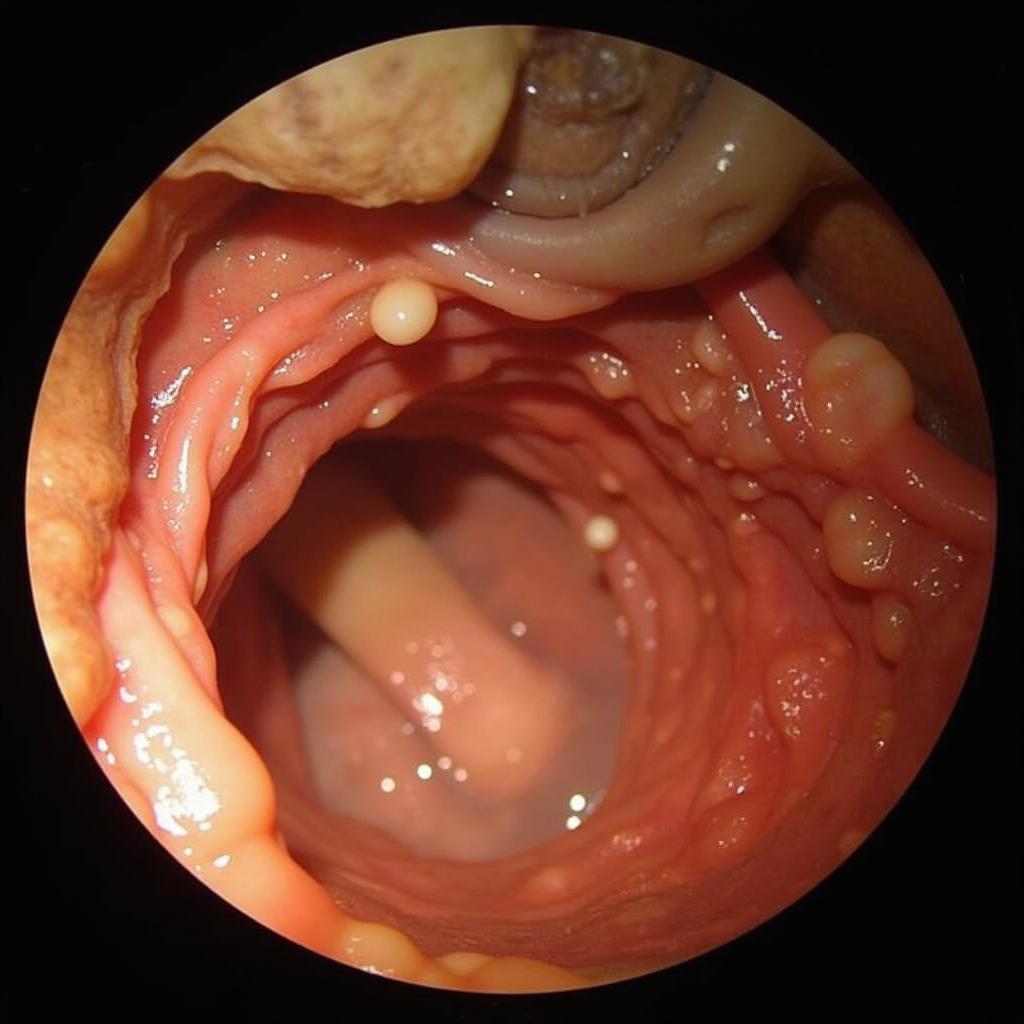Horse Endoscopy is a vital diagnostic procedure used by veterinarians to examine the internal structures of a horse’s respiratory and digestive systems. It offers a minimally invasive way to identify and address various health issues, contributing significantly to equine well-being. This procedure allows for detailed visualization, accurate diagnosis, and informed treatment decisions, ultimately improving the horse’s overall health and performance.
What is Horse Endoscopy?
Horse endoscopy involves inserting a thin, flexible tube with a camera and light source (an endoscope) into the horse’s body. This allows the veterinarian to view the internal structures on a monitor, providing real-time images of the airways, esophagus, stomach, and even parts of the small intestine. The procedure is commonly used to diagnose and monitor respiratory conditions like roaring and inflammatory airway disease (IAD), as well as digestive issues such as ulcers and esophageal obstructions. Early diagnosis through endoscopy often leads to more effective treatment and better outcomes for horses. Choosing a skilled and experienced veterinarian for this procedure is essential for the horse’s safety and accurate results.
Have you ever wondered how veterinarians get such a clear view inside a horse’s complex airways? That’s where the power of horse endoscopy comes in. It’s like giving your vet a superpower, allowing them to see inside your horse with incredible detail.
Why is Horse Endoscopy Performed?
Several reasons might lead a veterinarian to recommend an endoscopy for a horse. These include:
- Respiratory Issues: Coughing, nasal discharge, exercise intolerance, and noisy breathing are common indicators of respiratory problems that warrant endoscopic investigation. Conditions like dorsal displacement of the soft palate (DDSP), commonly known as “roaring”, can be accurately diagnosed through this procedure.
- Digestive Problems: Recurrent colic, weight loss, poor performance, and difficulty swallowing may suggest digestive tract issues requiring an endoscopy. The procedure can reveal ulcers, inflammation, and other abnormalities within the esophagus, stomach, and duodenum.
- Pre-purchase Exams: Endoscopy can be a valuable part of a pre-purchase examination, providing potential buyers with insights into the horse’s respiratory and digestive health. This can help inform purchase decisions and potentially avoid future health complications.
- Monitoring Treatment: Endoscopy can be used to monitor the effectiveness of treatments for various conditions. For example, it can track the healing of ulcers or the resolution of inflammation in the airways. This ensures that the prescribed treatment plan is yielding the desired results.
 Diagnosing Respiratory Issues with Endoscopy
Diagnosing Respiratory Issues with Endoscopy
“Endoscopy has revolutionized the way we diagnose and treat horses,” says Dr. Emily Carter, DVM, an equine specialist with over 20 years of experience. “It provides us with invaluable insights that were previously impossible to obtain without more invasive procedures.”
The Horse Endoscopy Procedure: What to Expect
A horse scope typically involves lightly sedating the horse to ensure comfort and cooperation during the procedure. The endoscope is then carefully inserted through the nostril for examination of the respiratory tract, or through the mouth for evaluation of the digestive system. The images are displayed on a monitor, allowing the veterinarian to thoroughly examine the internal structures and identify any abnormalities. The procedure itself is generally quick and well-tolerated by horses.
Do you suspect your horse might be suffering from red worms in horses? While endoscopy isn’t typically used to diagnose worms, it can reveal other digestive issues that might have similar symptoms.
Recovery and Aftercare
Following the procedure, the horse will be monitored until the sedation wears off. In most cases, horses can resume normal activity within a few hours. The veterinarian may prescribe medications based on the findings of the endoscopy. It’s important to follow the veterinarian’s post-procedure instructions carefully to ensure a smooth recovery.
“Proper aftercare is essential for a successful outcome following endoscopy,” explains Dr. James Miller, DVM, a board-certified equine surgeon. “Following your veterinarian’s instructions carefully will help ensure your horse recovers quickly and without complications.”
Conclusion
Horse endoscopy is a crucial diagnostic tool that allows veterinarians to assess the health of a horse’s respiratory and digestive systems. It’s a minimally invasive procedure that offers detailed visualization, leading to more accurate diagnoses and targeted treatment plans. Understanding this valuable tool can empower horse owners to make informed decisions regarding their horse’s health, ultimately contributing to their well-being. If your horse is exhibiting any signs of respiratory or digestive problems, talk to your veterinarian about whether horse endoscopy might be beneficial. Early diagnosis and intervention can significantly improve outcomes and ensure a long and healthy life for your equine companion.
FAQ
- Is horse endoscopy painful? The procedure is typically performed under light sedation, minimizing any discomfort for the horse.
- How long does the procedure take? A horse endoscopy generally takes 30-60 minutes, depending on the areas being examined.
- What are the risks associated with horse endoscopy? While generally safe, complications like minor bleeding or perforation are rare but possible.
- When will I get the results of the endoscopy? Your veterinarian can often discuss preliminary findings immediately after the procedure.
- How much does horse endoscopy cost? The cost varies depending on the location and complexity of the procedure.
- What are the common signs that a horse may need an endoscopy? Persistent cough, nasal discharge, difficulty breathing, poor performance, and recurrent colic are some common signs.
- Can cough ease for horses help with respiratory issues before an endoscopy is necessary? While some remedies may provide temporary relief, it’s crucial to consult a vet for accurate diagnosis and treatment.
Common Scenarios Requiring Endoscopy
- A horse with a persistent cough and decreased athletic performance.
- A racehorse experiencing exercise intolerance and noisy breathing (“roaring”).
- A horse with recurrent colic and weight loss.
- A horse undergoing a pre-purchase examination.
Further Reading and Resources
For more information on equine health, visit our articles on cough ease for horses.
Need assistance? Contact us at Phone Number: 0772127271, Email: [email protected] Or visit us at QGM2+WX2, Vị Trung, Vị Thuỷ, Hậu Giang, Việt Nam. We have a 24/7 customer service team.